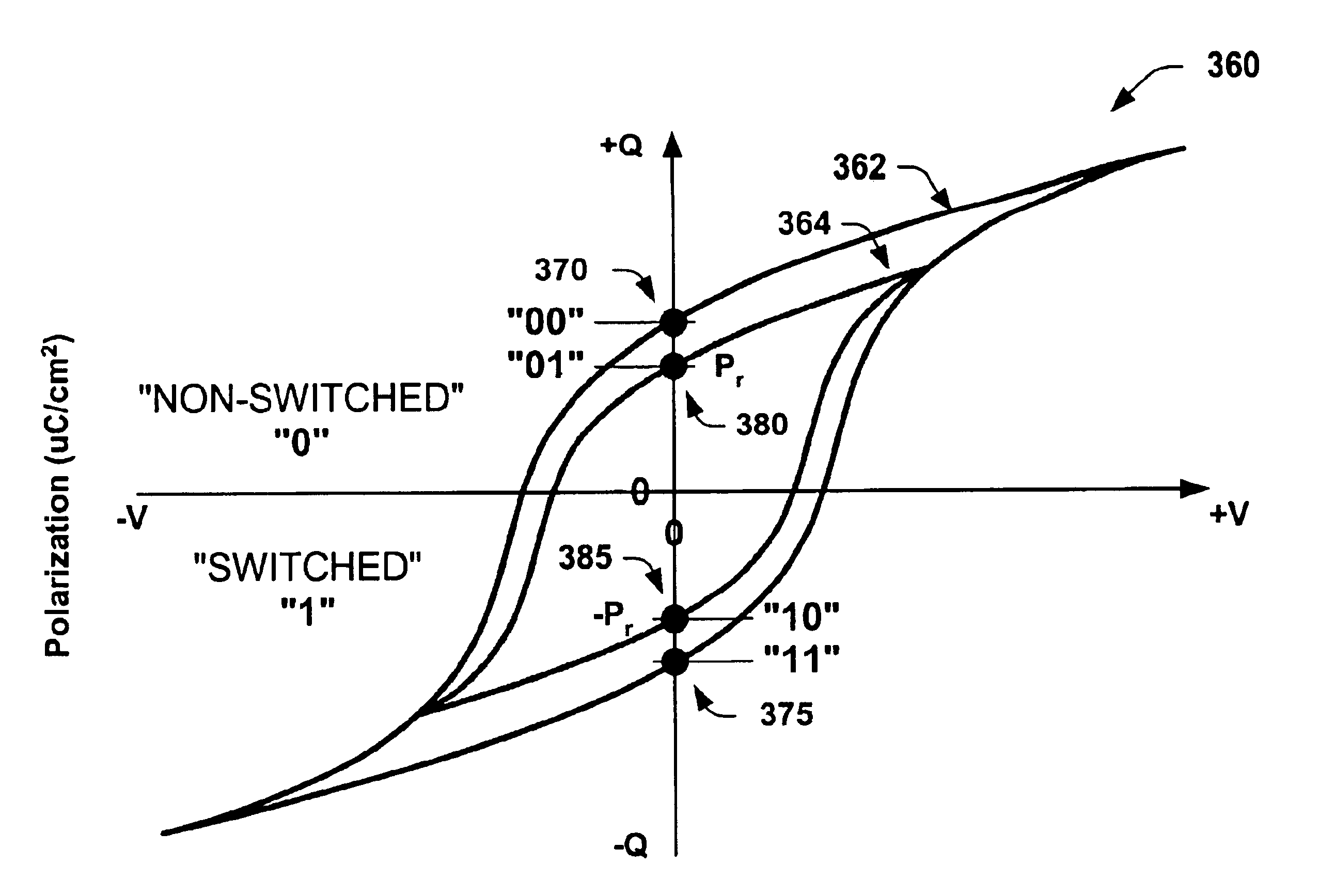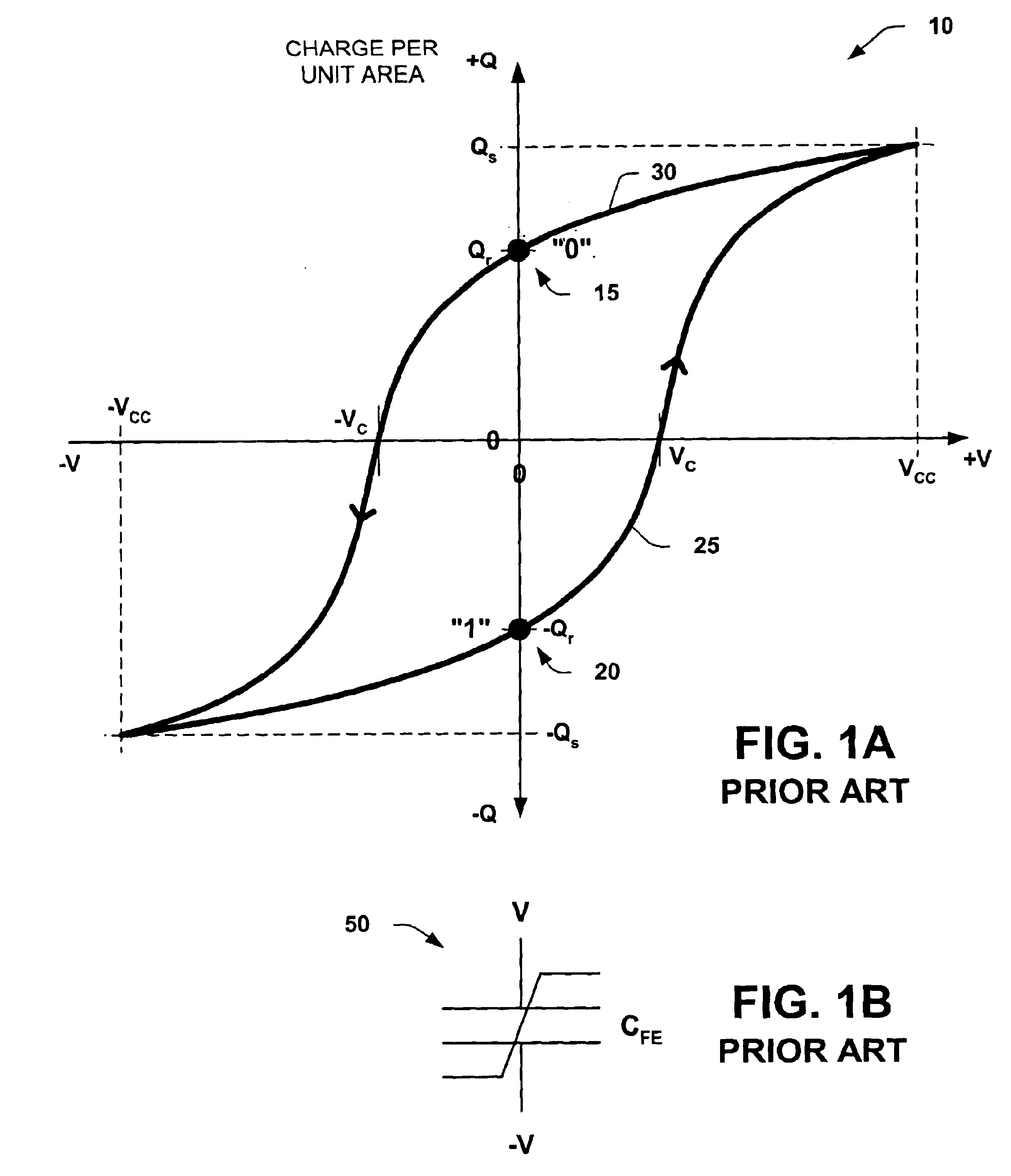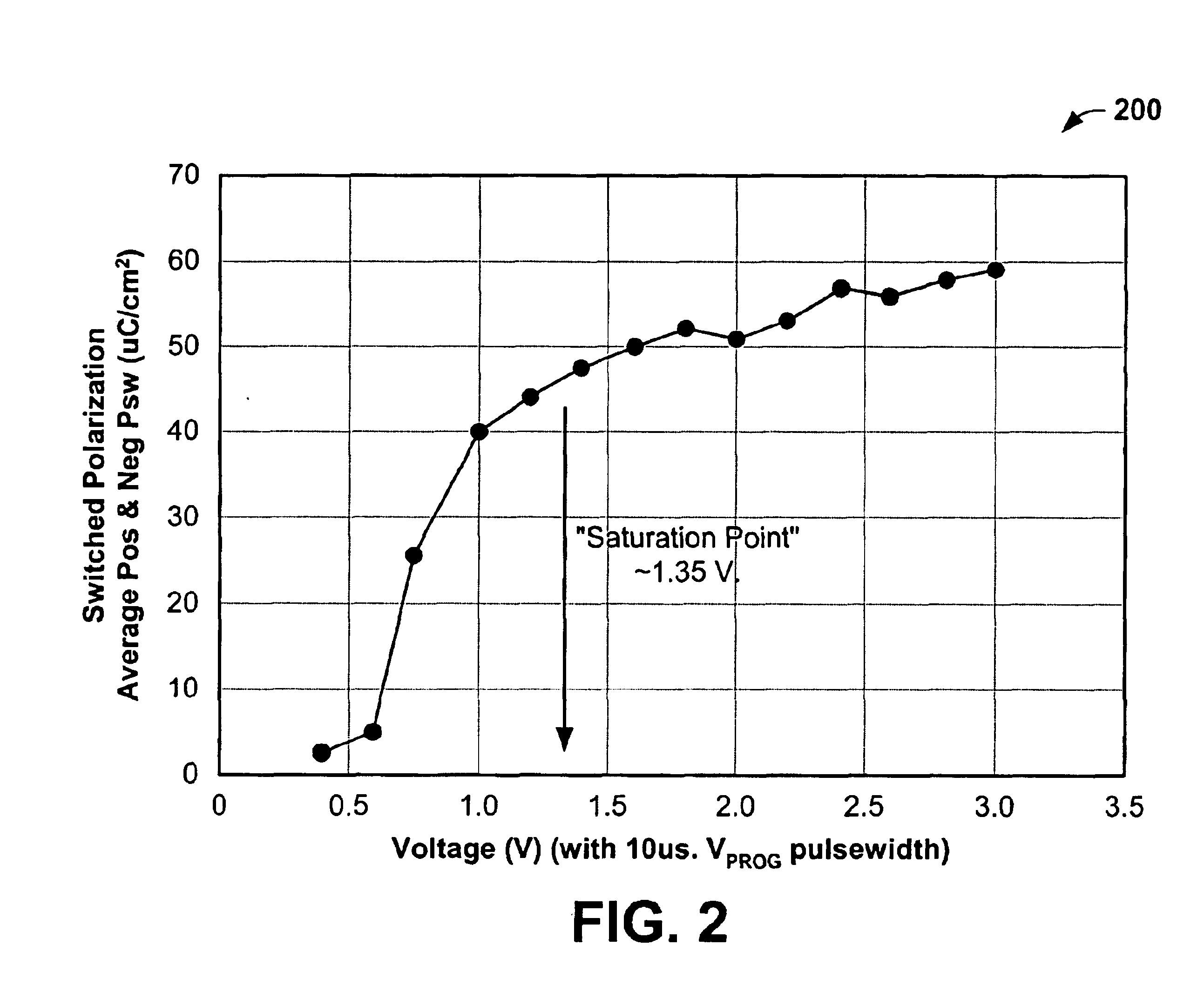Ferroelectric memory with wide operating voltage and multi-bit storage per cell
- Summary
- Abstract
- Description
- Claims
- Application Information
AI Technical Summary
Benefits of technology
Problems solved by technology
Method used
Image
Examples
Embodiment Construction
The present invention will now be described with reference to the attached drawings, wherein like reference numerals are used to refer to like elements throughout. The invention relates to memory apparatus and methodologies, which may be employed in write and read operations of a multi-level FeRAM memory device. One or more exemplary implementations of the various aspects of the invention are hereinafter illustrated and described in the context of ferroelectric memory devices comprising single transistor, single ferroelectric capacitor (1T1C) memory cells organized in folded bit line architectures.
In the above exemplary architecture, a program pulse is coupled with the memory cell during a write operation to store data in the FeCap as one of a plurality of switched and non-switched polarization charge levels (polarization charge levels, or magnitudes). During a read operation, a multi-level sense amp circuit is coupled to the first and second data bit lines with the ferroelectric me...
PUM
 Login to View More
Login to View More Abstract
Description
Claims
Application Information
 Login to View More
Login to View More - R&D
- Intellectual Property
- Life Sciences
- Materials
- Tech Scout
- Unparalleled Data Quality
- Higher Quality Content
- 60% Fewer Hallucinations
Browse by: Latest US Patents, China's latest patents, Technical Efficacy Thesaurus, Application Domain, Technology Topic, Popular Technical Reports.
© 2025 PatSnap. All rights reserved.Legal|Privacy policy|Modern Slavery Act Transparency Statement|Sitemap|About US| Contact US: help@patsnap.com



